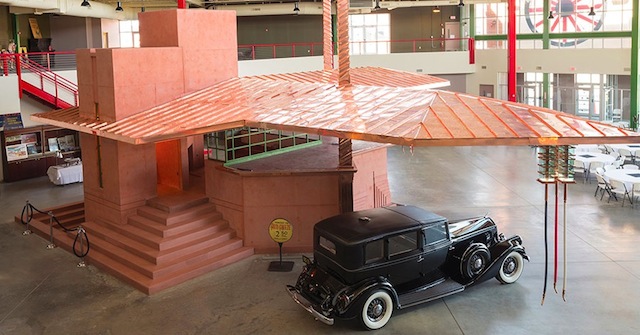In 1927, acclaimed architect Frank Lloyd Wright designed a petrol station for Buffalo, New York, envisioning a gleaming centre of commerce and social interaction for the bustling industrial city. Almost 90 years later, the structure has finally been completed — in the lobby of an automobile museum.
The Pierce-Arrow Museum has been working to build the service station since 2002 as part of the institution’s transportation collection. After acquiring the plans from the Wright Foundation, the museum had to fundraise for over a decade, eventually securing $US6.3 million from the state. They opted to put the station indoors to protect it from Buffalo’s extreme weather, but it also insures them against upkeep down the road — Wright’s structures are notoriously fragile.
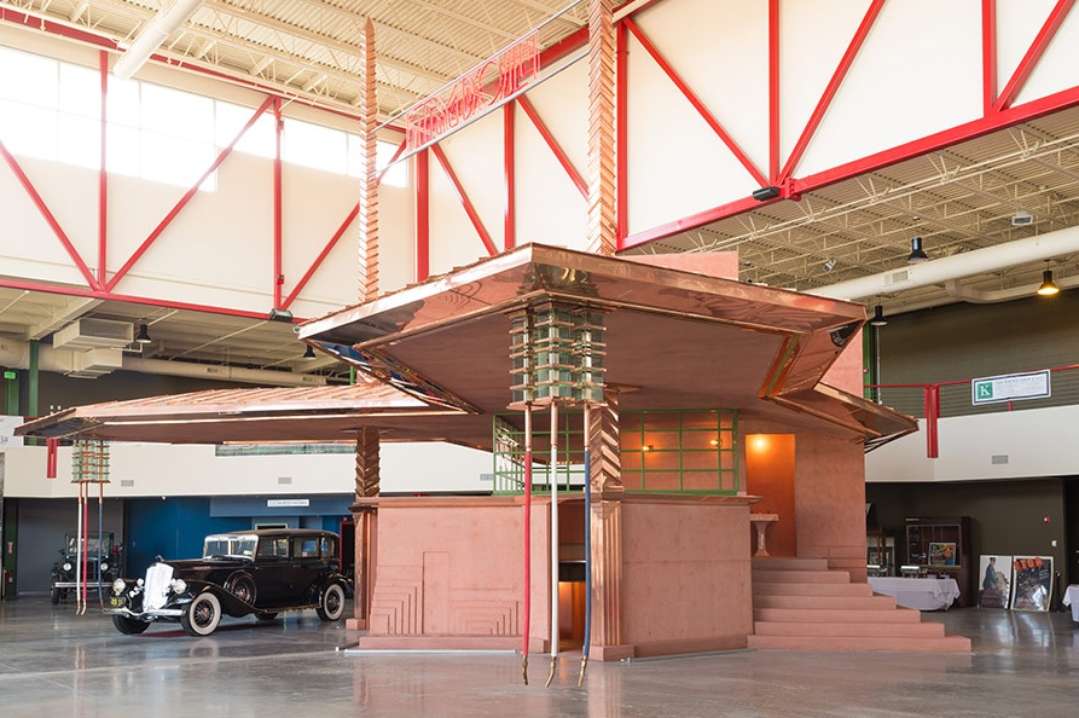
The structure was built according to Wright’s original 1927 plans, which include many of his signature moves. It’s made from poured concrete — a favourite material of Wright — and has a copper roof as well as decorative copper panels and two 14m totem poles. The museum also has Wright’s actual cars on loan, including a bright orange 1929 Cord L-29 Cabriolet (not pictured), which seems to match the station perfectly.
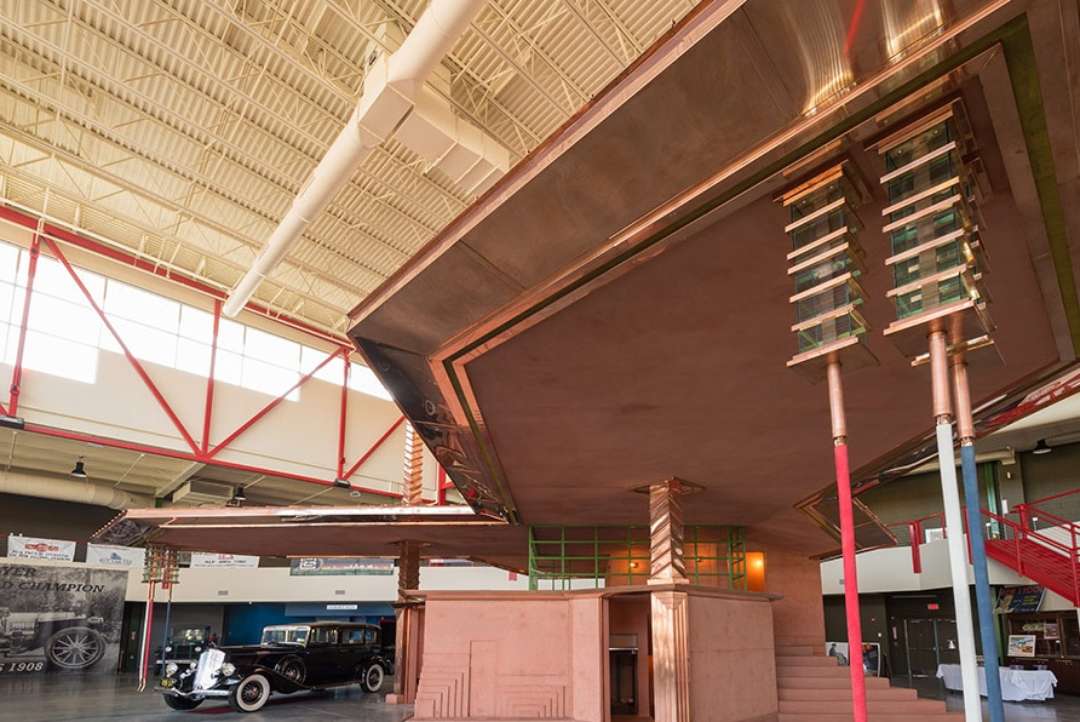
Wright hoped that customers would enjoy spending time at the service station while their cars were being tended to, so he designed an observation room on the second floor, which is accessed by the staircase to the right. There are posh restrooms and even a fireplace, all meant to keep the experience elegant.
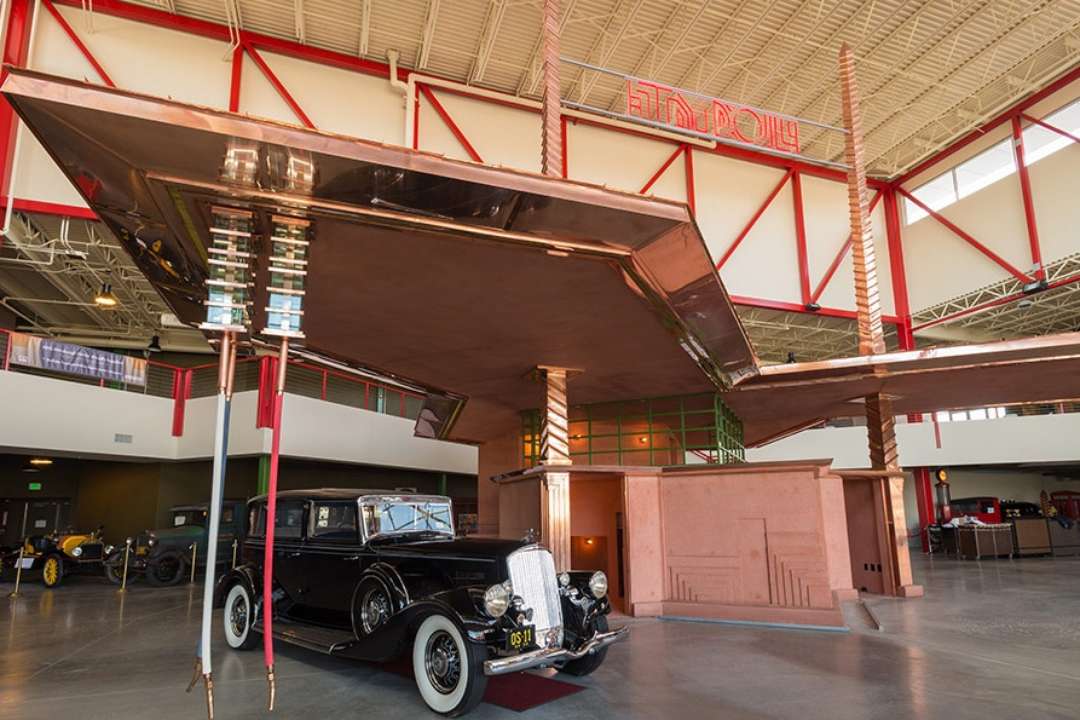
The cantilevered roof also includes the most gorgeous petrol-delivery devices ever designed: gravity-fed pumps made from blocks of green glass and copper. A Wright-designed sign meant to look like neon also sits atop the station, advertising Tydol, a petrol company from the 1920s.
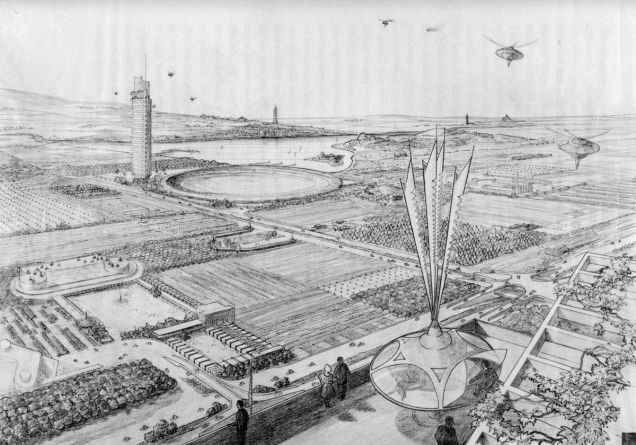
Broadacre City envisioned in the 1950s, scanned by Paleofuture from the 1958 book The Living City by Frank Lloyd Wright
The petrol station was part of the plan for excellent post over at Paleofuture. Here’s Wright in his 1932 book The Disappearing City:
In the gasoline service station may be seen the beginning of an important advance agent of decentralization by way of distribution and also the beginning of the establishment of the Broadacre City.
Wherever the service station happens to be naturally located, these now crude and seemingly insignificant units will grow and expand into various distributing centres for merchandise of all sorts. They are already doing so in the Southwest to a great extent.
What’s especially fascinating is that Wright was kinda right, in a way. He saw the petrol station as the centre of the community, where people would linger while picking up merchandise trucked in from the far ends of the country, kind of a present-day trading post. Although he wasn’t exactly on the money as far as people chilling at the local Texaco, he was close about a new kind of social center. As our friends over at Jalopnik propose: He was envisioning the role of the Starbucks in today’s society.
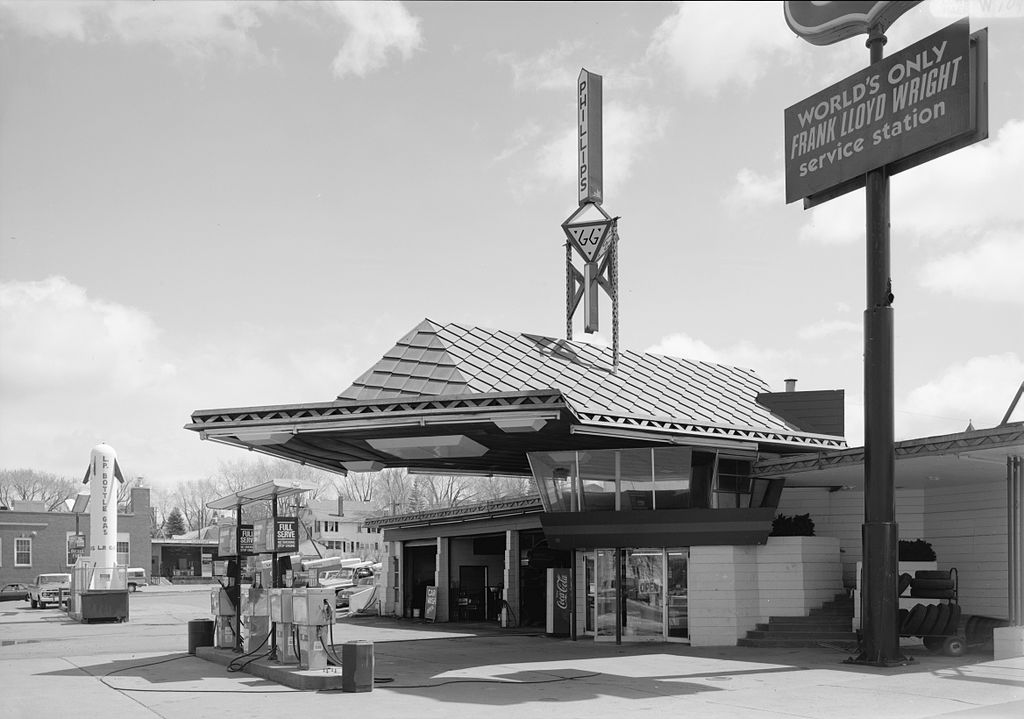
R. W. Lindholm Service Station in Cloquet, Minnesota, photo by Jet Lowe
The Buffalo installation is, of course, not a fully functional petrol station. Should you want the full FLW filling station experience, do not despair — there is another. The R.W. Lindholm Service Station in Cloquet, Minnesota was pretty much the only structure ever realised from the Broadacre vision. After designing the home of Lindholm, an oil man, Wright presented him with the plans to create a glorious petrol station, which was built in 1958. It’s currently owned by Lindholm’s grandson.
You can see the shared characteristics with the Buffalo station, from the copper roof to the observatory deck to the use of skylights to flood the station with natural light. One element that’s missing, however, are those innovative gravity pumps — local regulations required the petrol to stay in the ground. And another element added over the years might need to be changed in light of the Buffalo installation: A sign outside reads “World’s Only Frank Lloyd Wright service station.” [Architizer]
Picture: Pierce-Arrow Museum
